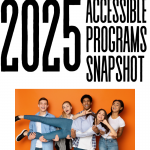Big Feeling Kids

Sometimes referred to as overly reactive, too sensitive, behavioural, manipulative, or out-of-control, “big feeling” kids, as they are colloquially referred to as, are those children who not only seem to perceive and pick up on variations in their own and others’ moods, they are more reactive to these feelings, becoming more excited (loud, silly, out-of-control) when they experience positive emotions and becoming more upset (temper tantrums, tears, anger, withdrawal) when they experience negative emotions. These reactions tend to happen quickly, with little build up or notice, and often these children are described as “going from 0-100” in seconds, sometimes for no apparent reason. From an outside perspective, the emotional reaction appears to be way bigger than is justified by the situation at hand; what would usually elicit a feeling of slight inconvenience for others, can elicit devastation for big feeling kids. It also takes big feeling kids a lot longer to get back to baseline after experiencing an emotional disruption; they are unlikely to just shake things off or get over things easily.
A continually growing base of research suggests that there is a very big overlap between kids who experience big feelings and kids who have neurodiverse brains. In particular, the relationship between ADHD and emotion dysregulation (a term that summarizes the difficulties associated with big feeling kids) is significant, and although it is not part of the diagnostic criteria for ADHD, emotion dysregulation is considered a core feature of most ADHD presentations. What’s more, emotion regulation challenges tend to have the greatest impact on a child’s sense of wellbeing and self-esteem, far greater than the ADHD-specific symptoms of attention differences, hyperactivity, and impulsivity. Current research estimates the prevalence of emotional dysregulation difficulties amongst children diagnosed with ADHD to be between 24-50%.
The big feeling kid and ADHD connection is thought to result from executive function weakness (for more information on executive function and ADHD see Executive Function and ADHD). Specifically, poor executive function control in areas of self-restraint can result in the emotional impulsivity we see with these youth. Children with task orientation and shifting weaknesses may have a harder time modulating or inhibiting their emotional expressions. Further, differences in attentional control can make it hard to stop ruminating (playing the situation over and over in the mind) which may keep the emotional reaction heightened for longer. Finally, working memory differences can also affect children’s ability to self-soothe and use other strategies to self-regulate.
Unfortunately, there are risk factors associated with big feeling kids who do not get the support and intervention they need. These risks include increased problems in social relationships, difficulties achieving work or academic goals, a heightened risk of being involved in car accidents or road rage incidents, increased risk of developing depression and anxiety related problems, and increased risk of experiencing addiction-related difficulties.
Parenting a big feeling kid and learning how to manage and support these big emotional expressions is challenging for anyone; it can be particularly challenging when parents do not share the same level of emotional sensitivity and reactivity as their children do. If you are feeling baffled by your big feeling kid, psychological assessment may be helpful in three main ways: 1) to determine whether your child meets criteria for ADHD or another diagnosis; 2) to better understand your child’s individual executive function profile and gain access to direct intervention recommendations; and 3) to gain understanding of your child’s experience with emotion dysregulation and provide intervention recommendations to work to prevent the associated long-term risks.
by Myriah Mulvogue, M.A., R.Psych.


